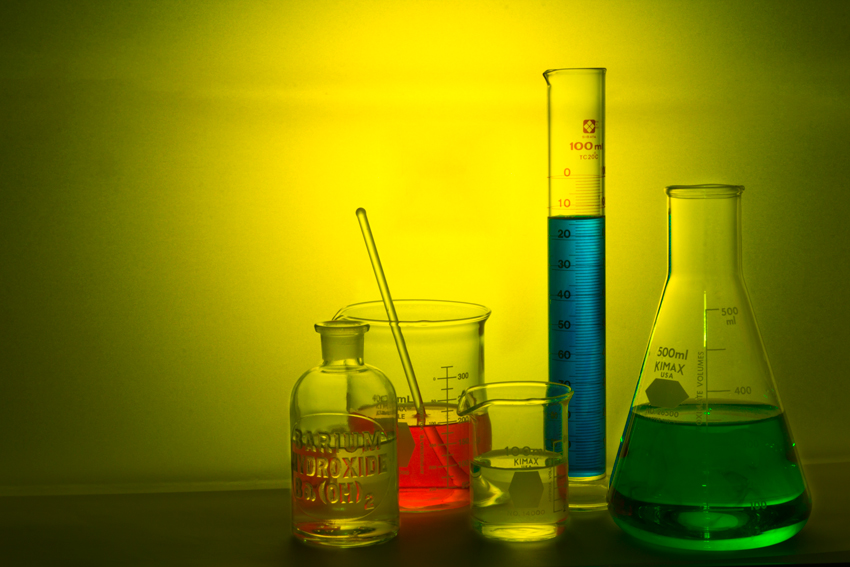A-Level
The department attracts more than 60 A-level candidates a year and all of these will work towards a stand-alone AS qualification comprising of two AS Written Theory examinations at the end of the lower sixth year. They will complete this qualification by developing their practical skills during the course of the year to culminating in a two part practical examination which includes a series of practical observations in the laboratory with a later written exam. The January examination session will be used provide a ‘mock’ Unit 1 paper.
AS Unit 1 begins with a study of basic atomic structure, bonding and inter-molecular forces and the physical properties of compounds. Group VII and Group II elements and quantitative chemistry then complete the theory content as well as providing the basis for the AS practical examination. Organic chemistry forms a major part of AS Unit 2, followed by a qualitative introduction to equilibrium and kinetics with a more detailed look at thermochemistry.
AS 1: Basic Concepts in Physical and Inorganic Chemistry (40% AS grade)
AS 2: Further Physical and Inorganic Chemistry and an Introduction to Organic
Chemistry (40% AS grade)
AS 3: Basic Practical Chemistry (20% AS grade)
Successful passing of the examination leads to the AS level qualification in Chemistry. It is envisaged that most of the AS candidates will continue with the subject for another year, leading to the full A-level qualification in Chemistry.
This Upper Sixth year group will sit two A2 module examinations at the end of the year and complete a third module assessing their practical skills in a two part practical examination which includes a series of practical observations in the laboratory with a later written exam. The January examination session will be used provide a ‘mock’ Unit 1 paper. Unless staff changes have forced otherwise, the staffing of the sets will usually remain the same from AS to A2 year.
A2 1: Periodic Trends and Further Organic, Physical and Inorganic Chemistry
(40% of A2 mark)
A2 2: Analytical, Transition Metals, Electrochemistry and Further Organic Chemistry
(40% of A2 mark)
A2 3: Practical Assessment (20% of A2 mark)
Course Structure Examination Board CCEA
Students can take the AS course as a final qualification; or the AS units plus the A2 units for a full GCE A level qualification.
Assessment is by six externally assessed units: four are theory units and two are practical based units.
The full Advanced GCE award is based on students’ marks from the AS (40 percent) and the A2 (60 percent). A2 units have an element of synoptic assessment (to assess students’ understanding of the subject as a whole), as well as more emphasis on higher order thinking skills. Assessment at A2 includes more demanding evaluative tasks and
The AS units at are assessed at the end of the Lower Sixth year and the marks gained contribute to 40% the final A Level grade.
AS
Two Theory written examinations each 1 hour 30 minutes and 80 marks.
Each worth 16% of the full A-Level grade.
A2
Two Theory written examinations each 2 hours and 100 marks.
Each worth 24% of the full A-Level grade
Practical Assessmennt
Chemistry is an experiment based subject and considerable emphasis is placed on experimentation: carrying out investigative, preparative and analytical practicals and explaining observations with new found knowledge.
AS Practical Examination 1 hour 15 minutes in the laboratory and 25 marks.
AS Practical written examination of 55 marks.
Together worth 8% of the full A-Level grade.
A2 Practical Examination 1 hour 15 minutes in the laboratory and 25 marks.
A2 Practical written examination of 55 marks.
Together worth 12% of the full A-Level grade.
Maths Requirements
Overall, at least 20% of the marks in assessments for chemistry will require the use of mathematical skills. These skills will be applied in the context of chemistry A-level and will be at least the standard of higher tier GCSE mathematics.

